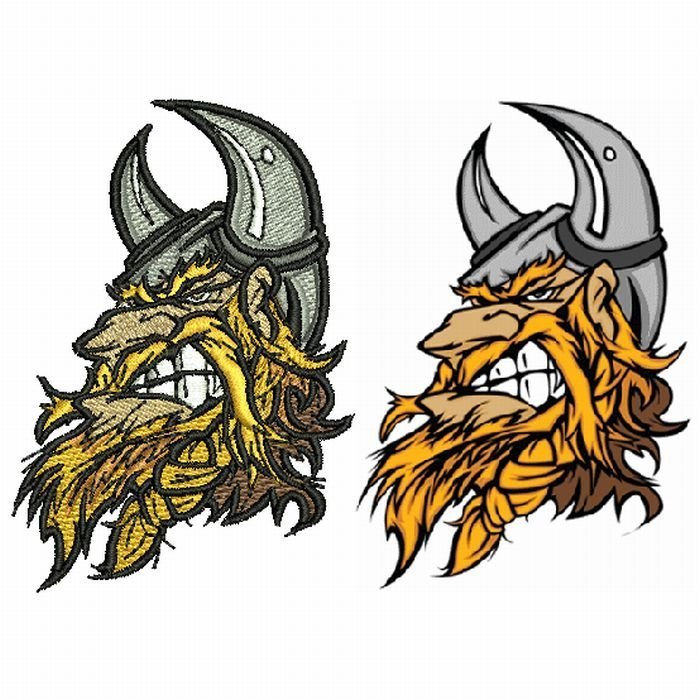Premium Digitizing for Embroidery: Expert Workmanship
Premium Digitizing for Embroidery: Expert Workmanship
Blog Article
Grasping the Needlework Digitizing Process: Your Ultimate Guide
Needlework digitizing is a precise craft that needs accuracy and experience to equate detailed layouts into digital styles for equipment embroidery. As artisans start this trip to understand the embroidery digitizing process, a detailed understanding of the essentials establishes the structure for quality. Beyond the rudimentary knowledge lies a realm of advanced software program, specialized devices, and nuanced strategies waiting to be explored. By delving into the nuances of digitizing, one can unlock a world of innovative opportunities and raise their needlework tasks to brand-new elevations.

Comprehending Embroidery Digitizing Fundamentals
Embroidery digitizing fundamentals develop the foundation upon which elaborate styles are equated into machine-readable styles for precise sewing. This first action in the needlework digitizing process is important for making sure that the last stitched product is a faithful representation of the original layout. Understanding needlework digitizing basics involves grasping key concepts such as stitch types, sew instructions, thickness, rug, and draw settlement.
Sew kinds play a crucial function in determining the aesthetic and textural end result of the stitched style. By choosing the proper stitch type, whether it be satin, fill, or running stitch, digitizers can achieve the desired effect and boost the total high quality of the embroidery. Additionally, sew instructions influences the circulation and measurement of the style, while density identifies the spacing and coverage of the stitches.
In addition, rug stitching gives stability to the design by protecting the fabric and preventing distortion throughout the embroidery procedure. Pull settlement is another essential factor to consider to combat the natural propensity of fabric to agreement when stitched. Grasping these embroidery digitizing essentials is fundamental for developing professional-quality embroidered items.
Choosing the Right Digitizing Software Application
Choosing the suitable digitizing software is an important decision that dramatically influences the efficiency and high quality of the needlework digitizing procedure. Digitizing for Embroidery. When choosing the best digitizing software application, it is vital to think about aspects such as the intricacy of layouts you plan to create, the user-friendliness of the software, the level of client support used, and the compatibility with your needlework equipment
There are various digitizing software options offered in the marketplace, varying from standard programs for newbies to innovative software program for specialist digitizers. Some popular selections consist of Wilcom EmbroideryStudio, Hatch Embroidery Software, and PulseID. These software application bundles use a vast array of devices and attributes to aid you develop complex styles with convenience.
Before choosing, it is advisable to explore the different software application choices with totally free tests or trials to establish which one ideal fits your requirements. Furthermore, checking out reviews and seeking referrals from seasoned digitizers can give beneficial understandings into the strengths and weaknesses of each software program plan (Digitizing for Embroidery). By very carefully assessing your requirements and contrasting the functions of different digitizing software, you can make an YOURURL.com enlightened selection that improves your embroidery digitizing operations
Digitizing Devices and Methods

Optimizing Layout Setup for Needlework
Grasping the complexities of layout settings is fundamental in accomplishing optimum outcomes in the embroidery digitizing process, structure upon the foundation laid by recognizing digitizing tools and strategies. When optimizing layout setups for needlework, it is important to think about factors such as stitch type, thickness, underlay, pull settlement, and registration. Registration setups straighten different components of the design precisely, keeping overall style honesty.

Troubleshooting Common Digitizing Issues
When experiencing usual digitizing problems throughout the embroidery process, it is important to comprehend the origin and execute reliable solutions immediately. One usual issue is stitch thickness issues, where stitches may be also thick, causing the material to tighten, or also sparse, resulting in voids in the design. Adjusting the stitch density setups in the digitizing software program can help solve this concern.
Another regular obstacle is thread breaks during the embroidery process. This can happen as this contact form a result of various reasons such as inaccurate tension settings, plain needles, or making use of low-quality thread. Guaranteeing correct upkeep of the needlework device, consisting of normal needle changes and tension changes, can minimize the occurrence of thread breaks.
Furthermore, style registration errors can result in misaligned elements within the embroidery design. Checking the style positioning in the digitizing software application and making essential changes prior to sewing can help in preventing this concern. By addressing these usual digitizing concerns without delay and properly, you can make certain a smoother needlework process and high-grade ended up items.
Final Thought
In final thought, grasping the needlework digitizing procedure needs a strong understanding of the fundamentals, the ideal selection of software program, and understanding of devices and techniques. Enhancing layout setups and repairing typical digitizing issues are crucial actions in guaranteeing high-grade needlework results. By adhering to these steps diligently, one can attain precision and efficiency in the digitizing procedure.
Report this page